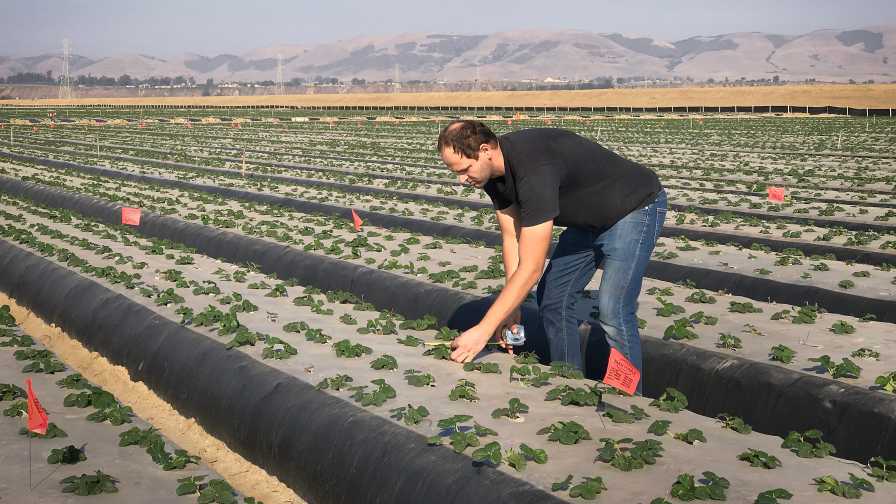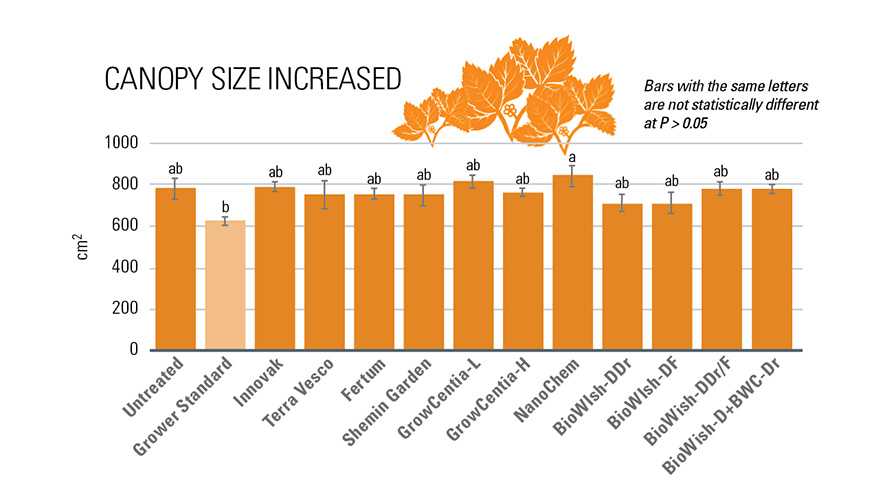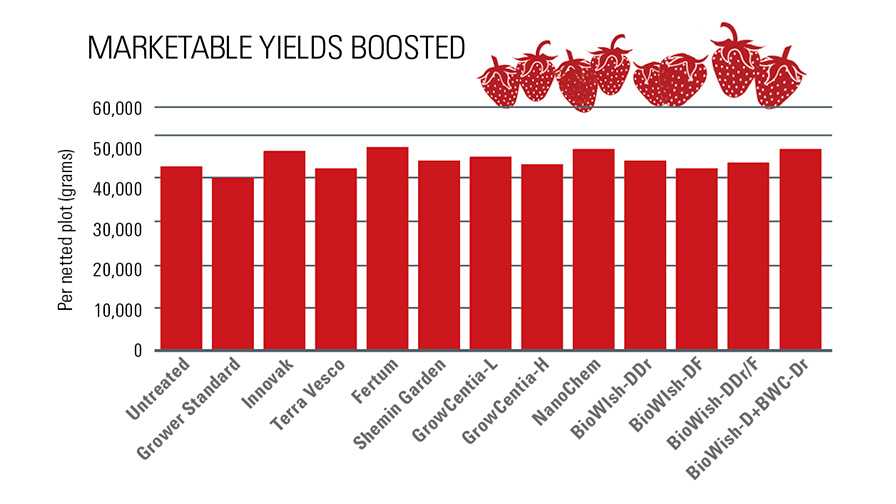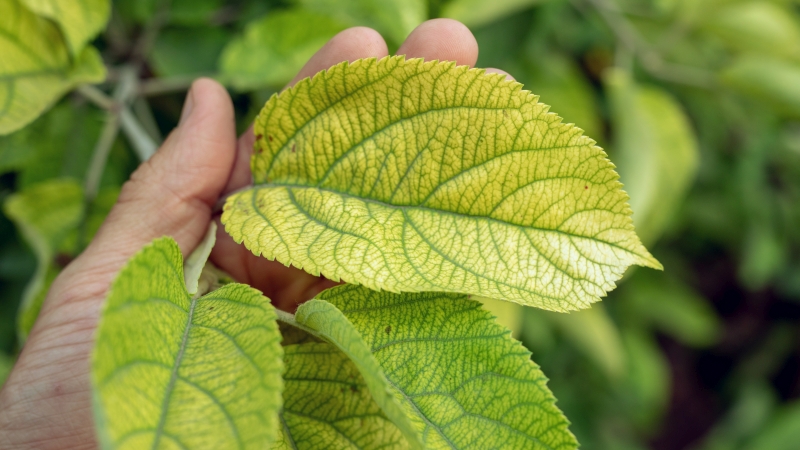Biostimulants Can Improve Strawberry Growth and Boost Yields

Research Assistant Tamas Zold takes canopy measurements of strawberries in a field at Manzanita Berry Farms in Santa Maria, CA.
Photo by Surendra Dara
Interest in biological products — nutrient, biostimulant, soil amendment or pesticide products of plant and microbial origin — is increasing for use in agriculture. Because of that, researchers such as Dr. Surendra Dara, University of California Cooperative Extension Advisor-Entomology and Biologicals, are exploring the potential of these products.
Dara explains that, in an undisturbed ecosystem, both beneficial and pest arthropods and microorganisms coexist, limiting each other’s proliferation and maintaining a balance.
“This coexistence is out of balance in an agricultural ecosystem, especially where fumigants and other agricultural inputs are routinely used,” he says. “Introducing beneficial microbes and organic or inorganic compounds can enhance the soil structure, promote root and plant growth, improve crop health, reduce salt and drought stress, prevent the loss of nutrients, increase the uptake of nutrients and water, and protect against pests and diseases.”
In a continuous effort to explore the potential of additive, soil amendment, biostimulants, and other products, Dara conducted a recent study in a conventional strawberry field along with grower Dave Peck at Manzanita Berry Farms in Santa Maria, CA. A dozen treatments, along with a control, were administered at different times, from planting in November until the end of production season in June.
Each treatment contained a 165-foot-long by 5.7’-wide bed of strawberries and replicated four times in a randomized complete block design. The variety was strawberry cultivar BG 6-30214. Other than the untreated control, all other products were administered on top of the grower standard fertility program.
Perhaps the biggest take-away from the study is that the treatments boosted the size of the plants and the marketable yields over the grower standard across the board. However, the differences were not huge, and the differences in some areas, such as Brix, were negligible. Dara says the results raise many questions, pointing to the need for further research. Here are the results from several key areas.
Canopy Size
Canopy size was assessed by measuring the size of the canopy along and across the length of the bed, from 20 random plants per bed, and calculating the area. Canopy size was higher in all treatments compared to the grower standard.

Researchers measured the size of the canopy along and across the length of the bed, from 20 random plants per bed, and calculated the area. The grower standard treatment produced the smallest canopy by far.
However, canopy size varied significantly among the treatments only on the last observation date — approximately three months after planting — when plants treated with EX10 and the GrowCentia product at the low concentration were larger than those in the grower standard.
Fruit Sugar Content
Sugar content was measured from two harvest-ready strawberries per bed in mid-May — about a month before the end of the final harvest — using a handheld refractometer. Showing the variability in the results, sugar content varied from 8.06 Brix to 9.53 Brix — remarkably, the grower standard. But Dara says growers shouldn’t be surprised at the results.
“Untreated controls sometimes do better than any of the treatments, which is basically true here,” he says. “Sometimes by applying too many inputs, we upset the ecosystem’s natural, delicate balance.”
Fruit Disease
In general, fruit disease was low throughout the trial on all the treatments.
“It’s not always easy to find statistical differences among these biostimulants,” says Dara, adding with a chuckle: “My grower-collaborator (Peck) takes too good a care of the crops.”
Fruit disease obviously affects shelflife, and Dara says you can’t make claims that any of the treatments improved shelf life in the study, but that is subjective, anyway.
Marketable Yield
This category is obviously where the rubber meets the road for growers, and what jumped out was that the products in the study beat the grower standard across the board.

Strawberries in the study were harvested from February to June on a total of 36 dates. Seasonal marketable yields among all treatments exceeded the grower standard.
When compared to the grower standard, the marketable berry yield was 16.2%, and 13% higher in Fertum regimen, EX10 treatment, Innovak Global regimen, and BiOWiSH regimen 4, respectively. The marketable berry yield was 9.8%, 9%, 7.5%, and 6.8% higher in those respective treatments over the yield from untreated control.
“All the treatments didn’t have major impact, but some treatments improved fruit yield significantly,” says Dara. “We need to continue these studies.”









